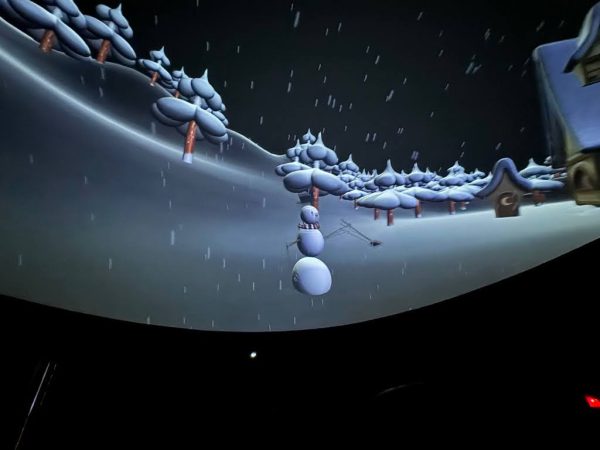Alternative Cinema: Onondaga vs. NYS
As part of the Alternative Cinema series, filmmaker Jason Livingston screened the 1971 film Onondagas vs NYS. The collaboration between the Onondaga Nation and Ithaca Video Project, screened on Tuesday, November 12. Livingston was invited to speak by Alternative Cinema series programmer and Visiting Assistant Professor of Video Art Emily Drummer. Livingston has produced many widely-screened film pieces and works with New York non-profits such as Cornell Cinema, the Experimental TV Center, the Standby Program and others. He is also a member of the Board of Trustees of the Flaherty Film Seminar, which meets annually at Colgate in June.
Before the screening, Livingston discussed the Upstate New York media ecology that was conducive to the creation of the film.
“There was a moment, and it’s sometimes hard to believe, here in the United States, that the arts were supported in a very robust fashion,” Livingston said.
In Upstate New York, the media arts received funding from the New York State Council on the Arts, which was founded in 1960 with the backing of Governor Nelson Rockefeller. The grants drove media production and as a result, many video collectives were created in Upstate New York. Combined with the rise of activism in the late 60s and early 70s, the scene led to the creation of films like Onondagas vs NYS.
“I’m not so sure we understand this planet despite all the measurement systems and sensory mechanisms we have evolved with our computer chips and algorithms, but even without something like a computational frame of thinking through our location, we’re participating in all kinds of imagined communities. This is something which I think is at the heart of the project of the 1971 video, which is to draw attention to who we are and how we relate to which communities, and where we may align ourselves differently when it comes to something like a sovereign nation,” Livingston said.
The film itself is a documentary of the conflict between the New York Department of Transportation (DOT) and the Onondaga Nation. Livingston has a connection to such an obscure and almost lost film through his mother, who co-produced it. Already having massively reduced Onondaga land, the state tried to claim eminent domain to use even more Onondaga land to expand Interstate 81. The Onondaga nation would later take the DOT to court and win, but the film focuses on the Onondaga people themself.
The film is 22 minutes long and shot in black-and-white. It features interviews with the Onondaga people and gives context regarding the centuries of struggle faced by their people. The documentary was stored on physical film, and as a result, decomposition has led to poor quality and loss of the intro. The film can be seen as an insight into an event that was part of the greater Red Power movement, taking place between the Occupation of Alcatraz and the Wounded Knee incident of 1973.
Following the showing of the film, Livingston showed some short pieces, mostly his own. The first piece is about his failure to complete an earlier film that centered around his family and his thoughts on possible reasons why it failed. The second is a modified commercial concept video by RedLeaf Resources Inc. about an ecologically friendly method of oil extraction. The third and final film showed, which marked the end of the presentation, was a montage of signs demarking land stolen from the Onondaga.








